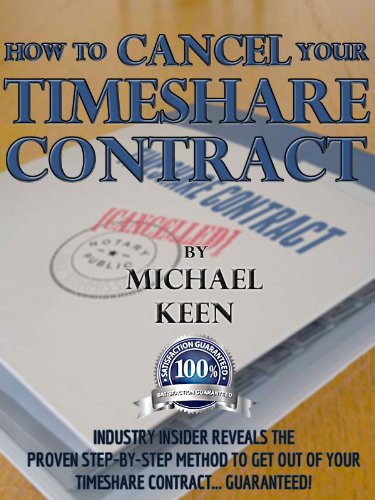But you could not assume it's constant and play with the spreadsheet a bit. However I, what I would, I'm presenting this because as we pay for the debt this number is going to get smaller sized. So, this number is getting smaller, let's https://blogfreely.net/gardenaz9s/often-the-first-action-is-to-recognize-the-ideal-lending-institution state eventually this is just $300,000, then my equity is going to get bigger.
Now, what I've done here is, well, in fact prior to I get to the chart, let me actually show you how I compute the chart and I do this over the course of 30 years and it passes month. So, so you can think of that there's in fact 360 rows here on the actual spreadsheet and you'll see that if you go and open it up.
So, on month zero, which I do not reveal here, you borrowed $375,000. Now, over the course of that month they're going to charge you 0.46 percent interest, keep in mind that was 5.5 percent divided by 12. 0.46 percent interest on $375,000 is $1,718.75. So, I haven't made any mortgage payments yet.
So, now before I pay any of my payments, instead of owing $375,000 at the end of the very first month I owe $376,718. Now, I'm an excellent guy, I'm not going to default on my home loan so I make that first home mortgage payment that we determined, that we computed right over here.
Now, this right here, what I, little asterisk here, this is my equity now. So, keep in mind, I began with $125,000 of equity. After paying one loan balance, after, after my first payment I now have $125,410 in equity. So, my equity has increased by precisely $410. Now, you're most likely saying, hi, gee, I made a $2,000 payment, a roughly a $2,000 payment and my equity just increased by $410,000.

So, that very, in the beginning, your payment, your $2,000 payment is primarily interest. Only $410 of it is primary. But as you, and after that you, and then, so as your loan balance decreases you're going to pay less interest here and so each of your payments are going to be more weighted towards principal and less weighted towards interest.
This is your brand-new prepayment balance. I pay my mortgage once again. This is my new loan balance. And notice, already by month two, $2.00 more went to primary and $2.00 less went to interest. And over the course of 360 months you're visiting that it's an actual, substantial distinction.
This is the interest and primary portions of our home loan payment. So, this whole height right here, this is, let me scroll down a bit, this is by month. So, this whole height, if you discover, this is the precise, this is exactly our mortgage payment, this $2,129. Now, on that extremely first month you saw that of my $2,100 just $400 of it, this is the $400, just $400 of it went to actually pay down the principal, the actual loan quantity.
Many of it went for the interest of the month. But as I begin paying down the loan, as the loan balance gets smaller sized and smaller, each of my payments, there's less interest to pay, let me do a much better color than that. There is less interest, let's state if we head out here, this is month 198, there, that last month there was less interest so more of my $2,100 in fact goes to pay off the loan.
Now, the last thing I desire to discuss in this video without making it too long is this idea of a interest tax reduction. So, a great deal of times you'll hear monetary planners or realtors tell you, hey, the advantage of purchasing your home is that it, it's, it has tax advantages, and it does.
Your interest, not your whole payment. Your interest is tax deductible, deductible. And I wish to be very clear with what deductible methods. So, let's for example, speak about the interest costs. So, this entire time over thirty years I am paying $2,100 a month or $2,129.29 a month. Now, at the beginning a lot of that is interest.
That $1,700 is tax-deductible. Now, as we go further and further each month I get a smaller and smaller sized tax-deductible portion of my actual home mortgage payment. Out here the tax deduction is actually really little. As I'm preparing yourself to settle my whole home loan and get the title of my house.
This doesn't indicate, let's say that, let's say in one year, let's state in one year I paid, I do not understand, I'm going to make up a number, I didn't compute it on the spreadsheet. Let's say in year one, year one, I pay, I pay $10,000 in interest, $10,000 in interest.

And, however let's state $10,000 went to interest. To state this deductible, and let's state prior to this, let's state prior to this I was making $100,000. Let's put the loan aside, let's say I was making $100,000 a year and let's say I was paying roughly 35 percent on that $100,000.
Let's say, you understand, if I didn't have this home loan I would pay 35 percent taxes which would be about $35,000 in taxes for that year. Just, this is simply a rough estimate. Now, when you say that $10,000 is tax-deductible, the interest is tax-deductible, that does not suggest that I can just take it from the $35,000 that I would have normally owed and just paid $25,000.
So, when I tell the IRS just how much did I make this year, rather of stating, I made $100,000 I say that I made $90,000 because I was able to deduct this, not directly Have a peek here from my taxes, I was able to deduct it from my earnings. So, now if I only made $90,000 and I, and this is I'm doing a gross oversimplification of how taxes actually get determined.